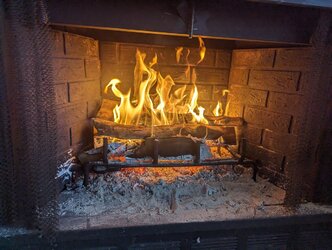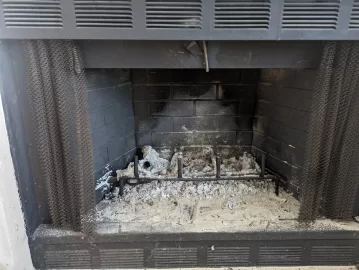I have a home with a small (28" wide and 15" deep) wood burning fireplace. One thing I've struggled with when using it is that my fires burn relatively fast and I end up eating through a lot of wood to keep them going, But that struggle amplified today when I tried using pecan wood.
I got pecan because it's supposed to be long burning, but I had the opposite experience: I started the fire at 11:30 with three logs, fed it with three logs again at 12:00 because I noticed that those three logs had almost burned down completely, fed it again with two more logs at 12:30, then gave up. By 1:15 all the logs had burned to ash, and by 1:45 even the embers were almost extinguished.
I have NO idea what's going on. The wood itself seems fine-- it ignited quickly and burns with little smoke-- so I have to assume that my issue lies with the fireplace itself.
I've attached a photo of the culprit. Any ideas on what, if anything, I can do to get fires that last longer?


I got pecan because it's supposed to be long burning, but I had the opposite experience: I started the fire at 11:30 with three logs, fed it with three logs again at 12:00 because I noticed that those three logs had almost burned down completely, fed it again with two more logs at 12:30, then gave up. By 1:15 all the logs had burned to ash, and by 1:45 even the embers were almost extinguished.
I have NO idea what's going on. The wood itself seems fine-- it ignited quickly and burns with little smoke-- so I have to assume that my issue lies with the fireplace itself.
I've attached a photo of the culprit. Any ideas on what, if anything, I can do to get fires that last longer?



